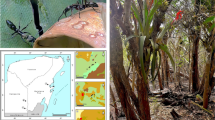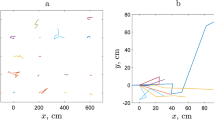Abstract
IN his recent letter in Nature1, Wells gives an interesting account of the movements and action of the proboscis of the lugworm and of the part that it plays in burrowing. He considers that its movements alone are sufficient to account for this activity, which is chiefly due to the diverging teeth of the buccal mass scraping away soil particles in the line of advance. He appears to consider that the physical properties of the soil are of no direct importance to burrowing, which he likens to that of a "digging rabbit".
This is a preview of subscription content, access via your institution
Access options
Subscribe to this journal
Receive 51 print issues and online access
$199.00 per year
only $3.90 per issue
Buy this article
- Purchase on Springer Link
- Instant access to full article PDF
Prices may be subject to local taxes which are calculated during checkout
Similar content being viewed by others
References
Wells, Nature, 162, 652 (1948).
Wells, J. Mar. Biol. Assoc. U.K., 26, 170 (1945).
Author information
Authors and Affiliations
Rights and permissions
About this article
Cite this article
CHAPMAN, G., NEWELL, G. Burrowing of the Lugworm. Nature 162, 894–895 (1948). https://doi.org/10.1038/162894c0
Issue Date:
DOI: https://doi.org/10.1038/162894c0
This article is cited by
-
Zu struktur und funktion der tapete in g�ngen von Arenicola marina l.
Zeitschrift f�r Morphologie und �kologie der Tiere (1954)
Comments
By submitting a comment you agree to abide by our Terms and Community Guidelines. If you find something abusive or that does not comply with our terms or guidelines please flag it as inappropriate.



